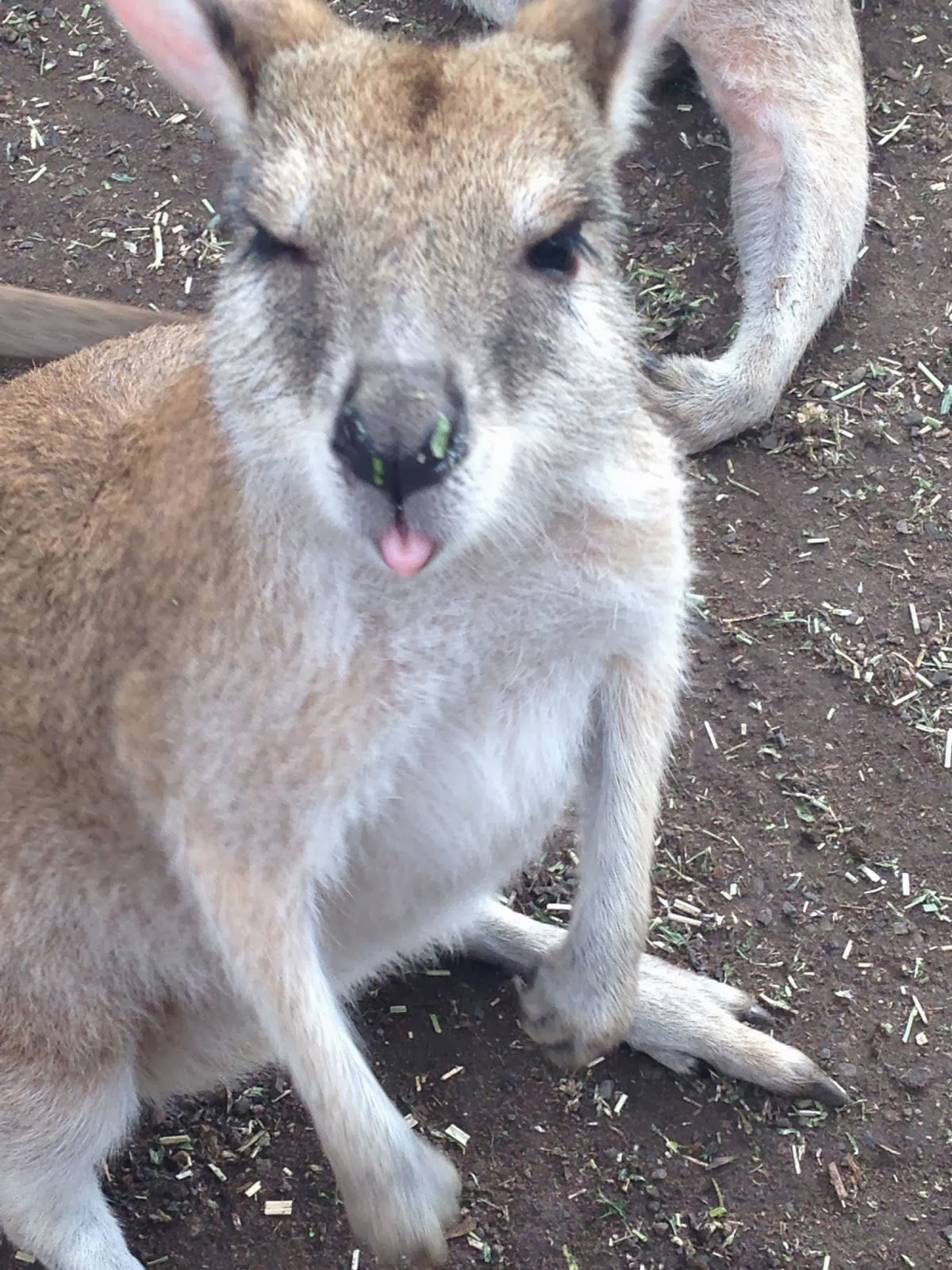This was my favorite day in Australia so far! We went to Featherdale Wildlife Park outside of Sydney and got to see and interact with a ton of Australian animals. We got to pet a Quokka (below top right) and feed wallabies and emus (below top left). It was amazing to be able to familiarize myself with the animals that live here. Most of the mammals are marsupials which means that they have a pouch that they carry their babies in (see the wallaby below).
Since Australia is such a large land mass that has been separated from other landmasses for so long it is home to tons of unique species that evolved here. 85% of its mammals are endemic (meaning the are only found in one place) which is a crazy high number! Unfortunately this uniqueness also means that a lot of these species are at risk. The Tasmanian Devil (below bottom right) are so endangered that they will go extinct in 5 years. This is due to habitat loss and a type of face cancer that is killing the population. There are so few left now that there is really no viable gene pool left. The Cassowary (below bottom right) is a large flightless bird that is native to Queensland. They are also at risk due to habitat loss. They are gorgeous birds, but also extremely territorial and dangerous. They have extremely strong legs and they can break a human's neck with a single kick. It is always sad to hear that a unique species is at risk due to human activities.
One of the reasons that I love zoos and aquariums (that treat their animals well of course) is that they are the main institutions that help raise funds and spread awareness to help species at risk. When people have concrete experiences with animals they are more about what happens to them and their natural environments. It makes environmental issues more relevant for people. I definitely know that they did so for me when I was little and continue to do so today!
One of the reasons that I love zoos and aquariums (that treat their animals well of course) is that they are the main institutions that help raise funds and spread awareness to help species at risk. When people have concrete experiences with animals they are more about what happens to them and their natural environments. It makes environmental issues more relevant for people. I definitely know that they did so for me when I was little and continue to do so today!






















